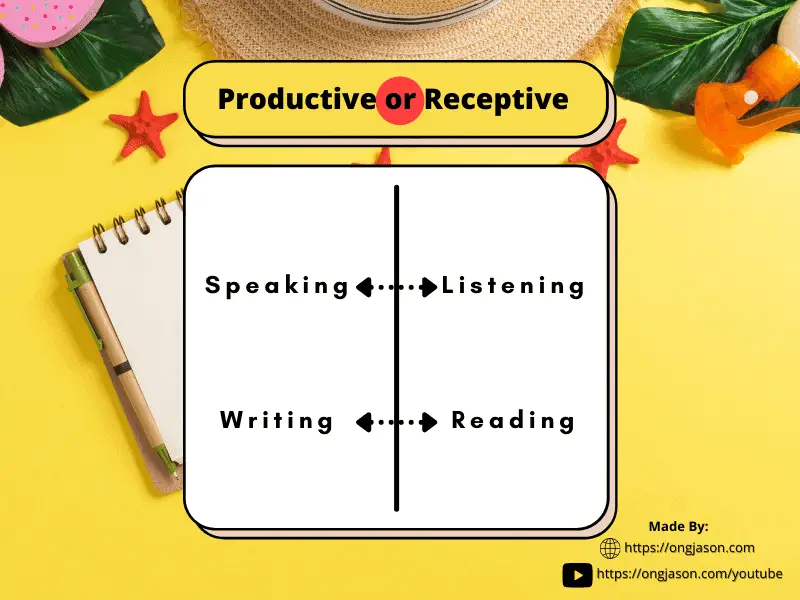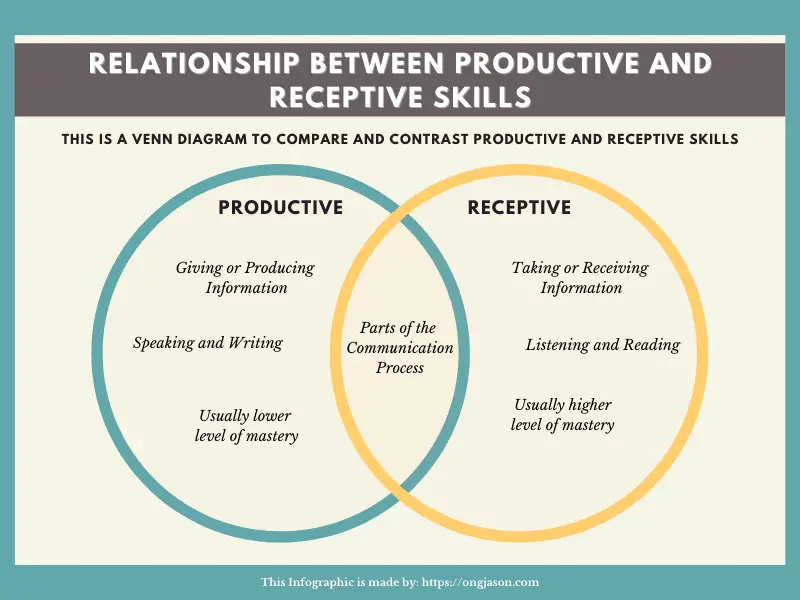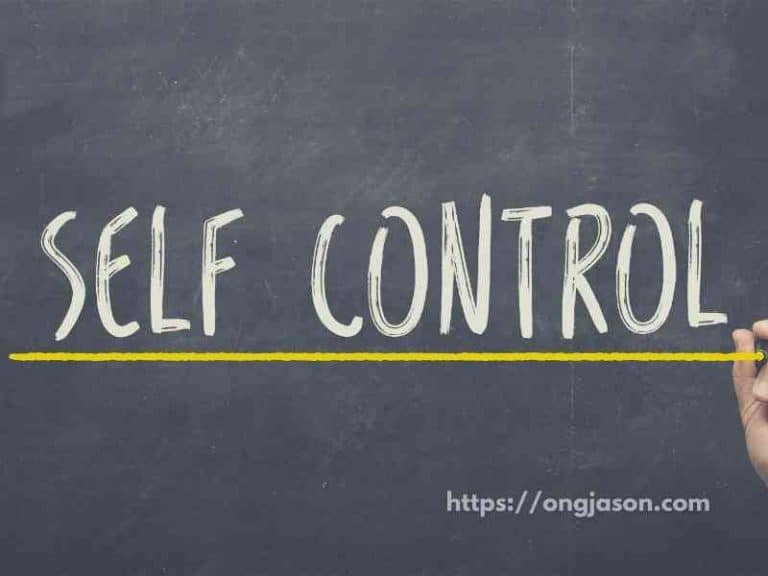Productive vs Receptive Skills | Comparison and Contrast
When we’re talking about communication, it comes with two important parts which are productive and receptive speech. These two are the core of communication and are often talked about in any language class. As a content creator and a writer, I needed to develop these skills further. I learned the skills not just in school, but also through experience. Thus, this article would discuss the difference between productive and receptive skills.
The relationship between productive and receptive skills is that while they are both parts of communication, their difference is that productive skills are focused on the skills needed in giving information, while receptive skills are focused on receiving information.
That is the relationship between the two and the point of this article. However, I also know that it still needs further explanation. In this article, I’ve prepared a deeper understanding, explanation, and infographic for you to understand things visually. We are going to briefly discuss each of the skills so you would understand their differences.

What is the difference between productive and receptive skills?
The difference between productive and receptive skills is that productive skill is focused on giving or producing information while receptive skill is focused on acquiring or receiving information. Furthermore, most people have higher receptive skills than productive skills.
| Productive Skill | Receptive Skill | |
| Use | Producing information | Receiving Information |
| Cores | Speaking, Writing | Listening, Reading |
| Skill Level | Usually Lower | Usually Higher |
When talking about the differences between productive and receptive skills, we are talking about the way they are used.
Basically, productive skills are used to give or produce information. Receptive skills are used to accept or receive information.
Productive came from the root word produce. The reason is that it is more on the production side of communication.
Receptive came from the root word receive. The reason being it is more on the receiving side of communication.
To make it easier to explain, I would give an example.
As a writer, I am writing this blog in hopes that you, as a reader would understand.
I am giving out information, the way I am giving information into something that can be easily understood is my productive skills.
The way you are receiving this information, the way you would understand what I am saying are your receptive skills.

Another difference is the core of productive and receptive skills.
I have explained in more detail each of these skills in a separate article. The reason is that explaining each of these skills would make this article very long. So, if you’re interested in each of them and want a better explanation of what they are and their core parts, then you may visit these articles:
But here is the point. The core of each skill is different.
When we are talking about productive skills, its core is writing and speaking.
When we are talking about receptive skills, its core is reading and listening.
Let’s go back to my writing example.
So I am writing this article to the best of my ability to make sure that most people would understand what I am saying. On the other side, you are reading this article so that you can get what I mean.
As you can see, their core is related to their difference. When we give information, we write or speak. When we receive information, we read or listen.
In my article explaining both of these in greater detail, I explained there why there are only 2 cores for each of them.
And the main reason is that there are actually only 2 ways for us to give information and 2 ways for us to receive information, which are writing and speaking, and reading and listening respectively.
The reason is that language, for instance, this article is composed of words and letters. How I crafted this set of words and letters for people to understand is my productive skill. How you understand this set of letters and words is your receptive skill.
Some people say that drawing is also a productive skill. Well, that’s true.
However, it is the same, you are actually reading or comprehending the image shown to you. Our brain actually sees letters as a kind of drawing.
The simple reason is our letters, alphabet, or writing itself was only developed recently. Our brain is not actually good with reading.
That’s why it is hard to study just by reading a chapter of your book. Most will find listening to their teacher better than reading.
That’s not the student’s fault or the book’s fault. It is that we are more inclined to learn by listening than reading.
I hope you get what I mean, drawing is also part of writing. They are technically the same when it comes to the cores of productive and receptive skills.
Another big difference is their level of mastery towards each other.
Lastly, we will be talking about their level of mastery toward each other.
The key thing to note here is that our productive skills are usually lower than receptive skills.
The main reason for this is that we can use contexts for receiving information or receptive skills.
Here’s an example:
“The idea is very complicated thus, he is completely nonplussed after hearing it out.”
We would rarely to never use nonplussed in a sentence. In fact, I never heard one using that word before.
But here is the thing, using context, we can actually understand what that word means. Let’s take a look.
Since the idea is extremely complicated, we can safely assume that nonplussed means confused.
Sine if the idea is complicated, we would most certainly be confused.
Now, let’s look at the meaning of the word.
Nonplussed: “Unsure about what to say, think, or do” – Meriam Webster Dictionary
That’s almost the same as confused.
The difference in skill level between productive and receptive skills is fairly obvious when learning a new language.
Most people studying a second language can attest that they can understand a language better than they can speak.
One thing is that some language requires different sets of tones such as when speaking in Mandarin.
But another reason is that we are usually better at understanding what the person is saying based on the context. Such is the example giving above.
Actually, just by body language, we can have a context on what the other person is saying. Let’s say pointing at something then speaking, means that he or she means that she is talking about the item being pointed out.
That’s like when I went to Hong Kong a few years back and the waiters are using their body language and calculator to tell me what they mean because I am so bad at Mandarin.
It’s also the same as a child understanding what you mean even if they can’t speak.

What is the connection between receptive and productive skills?
Now, let’s discuss the connection between receptive and productive skills. I have provided an infographic above for you to see their relationship.
When we talk about connection and relationships, we are not just talking about their differences, we are also talking about their similarity which we would discuss in this section.
The connection between productive and receptive skills is that they are similar when it comes to being part of the communication process. Both are very important because they’re about comprehension. However, productive skills are focused on giving information, while receptive is more on receiving information.
Earlier, I’ve already discussed the difference between the two.
This section is about their similarity which is that they are both parts of the communication process.
When we talk about communication, there are usually 2 parts to it which are giving and receiving information.
As you can tell, giving is productive, receiving is receptive.
Without the other, there can’t be any communication between us.
As you can see, while they are different, both are actually in harmony with each other each complementing each other for us to communicate properly with each other.
It is like my example that I am writing this article, and you are reading it.
You’re listening to someone talk, and you are listening to what they’re talking about.
Thus, when we are talking about their relationship with each other, we are talking of harmony between them
My point is this.
The relationship between receptive and productive skills is that they are in harmony with each other when it comes to communicating. While both are different in terms of handling information because one is on giving and the other is on receiving, they work together in order for us to understand one another.

“Only the things I love.“
ongjason.com is reader-supported. When you buy through links on the site, I earn an affiliate commission.
If you’re following me, you’ll know that I believe it is essential to have some tools, whether it’s for personal development or lifestyle in general.
So, here are the things I love.
YouTube
If you want to learn things for free, I recommend watching my YouTube Channel. Click the Button Below to go straight into my Channel. 🙂
Okay, let me first explain my Channel.
I believe that I really can’t explain everything too well on my blog. That’s why I created a YouTube Channel so I can easily explain a lot of things. Plus, I believe that Video Sharing is the future.
Recommended Books
The next thing is books. Books are, for me, one of the cheapest ways to get invaluable information. We can learn personal development, finance, career, relationships, and many more from books.
Here, I will be listing my favorite books in different categories.
- For Beginners – 7 Habits of Highly Effective People by Stephen Covey – Personal development has a lot of concepts and ideas to learn. Thus it can be really hard for beginners to know where to start. Thus, I recommend this book since all the basic concepts of personal development are here(except finance, check what I recommended for that)
- Productivity – The One Thing by Gary Keller – This book teaches us the power of focusing on one thing which is the ultimate source of productivity. The concepts taught are what I am using to constantly publish YouTube videos while maintaining this website.
- Busy? – Make Time by Jack Knapp – This book teaches us how to make time for the things we love. The concept is really simple but I think that makes it a book worth reading.
- Health – Lifespan by Dr.Sinclair – This Book teaches about the latest scientific research on lifespan. In his book, he has shared numerous things he is doing to slow down his aging process. This can be as easy as eating less which he recommends.
- Finance – The Richest Man in Babylon by George Clason – Perhaps one of the first books I’ve read about Finance, this book for me is the best if we are talking about learning basic finance such as basic saving and investing. The concepts are very simple but effective.
Audiobooks
Take this advice as a grain of salt.
I don’t recommend buying Audiobooks one by one. I mean, audiobooks can be quickly finished by listening while working out or doing some mindless tasks.
So here is to save you some money. Just go for a monthly subscription to Audible. I believe that you will save a lot of money with that plus, they usually give freebies to anyone starting.
My Audiobook Recommendation will always be the same as my book recommendations, but I personally like The 5 Second Rule by Mel Robbins. I like how she is so casual while reading her book.






